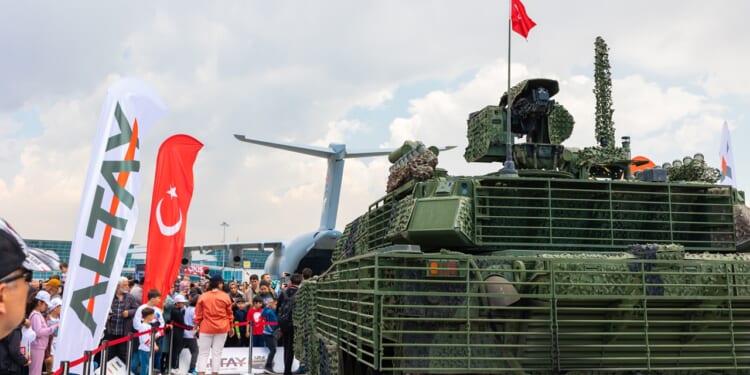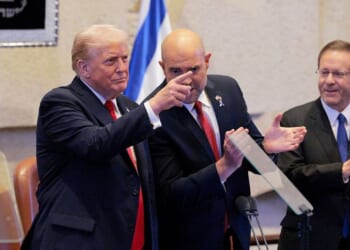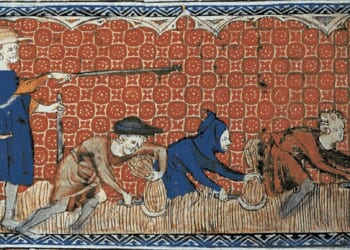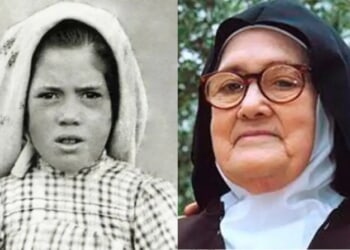The Altay tank is based on South Korea’s famed K2 Black Panther MBT—but has many adaptations to better tailor it to Turkish conditions.
The Turkish military took delivery of its first domestically built Altay T1 main battle tanks (MBTs) at a ceremony marking the opening of the newly completed BMC Ankara Tank and New Generation Armored Vehicles Production Facility. The country’s president, Recep Tayyip Erdogan, was in attendance—and announced that the MBTs had completed a testing program that included the vehicles traveling nearly 21,750 miles (35,000 km) and taking part in approximately 3,700 live-fire exercises.
Erdogan not only praised the capabilities of the Altay MBTs, but also stated that an indigenous 63,000-square-meter production facility would soon begin producing eight of the advanced MBTs, along with 10 Altug 8×8 armored vehicles, on a monthly basis.
“We continue to write a legend with our state-of-the-art air, land, and sea vehicles,” Erdogan said. “We are no longer just a state that follows; we are a state that is followed.”
The Altay T1 Main Battle Tank’s Specifications
- Year Introduced: Not yet introduced (anticipated late 2025)
- Number Built: 85 (completed or near-completion)
- Length: 7.3 m (24 ft 11 in)
- Weight: 65 tons, battle-ready
- Suspensions: Non-active in-arm suspension unit (ISU) with automatic track tension system (ATTS)
- Engine: Turkish-built DV27K diesel engine (1,500 hp)
- Top Speed: 65 kph (40 mph) on roads, 45 kph (28 mph) off-road
- Range: 450-500 km (280-310 mi)
- Armament: 120-mm L/55 smoothbore cannon, 7.62-mm coaxial machine gun, remotely controlled 12.7-mm machine gun
- Crew: 4
The Altay T1 was named in honor of General Fahrettin Altay, whose surname, meaning “red horse” or “colt,” was bestowed upon him by Mustafa Kemal Atatürk, the founder of the Turkish Republic. Altay served with distinction in the Gallipoli and Palestine campaigns during World War I, and later served as a cavalry commander during the Turkish War of Independence from 1919 to 1923.
The South Korean Origins of Turkey’s Altay T-1 Tank
The 65-ton Altay T1 is a third-generation MBT based on South Korea’s famed K2 Black Panther, but with features specific to Turkey’s Land Forces.
“The indispensable role of tanks in asymmetric and challenging operational environments, especially in conventional warfare with their high firepower, serious armor protection, and mobility reveals how valuable this project is for our army and defence industry,” Turkish Minister of National Defence Yaşar Güler told attendees at the recent ceremony.
“In this respect, our Altay tank will elevate the combat power of our land forces to even higher levels while also enhancing the safety of our personnel,” Güler added. “The sensitive developments in our region and around the world, as well as our strategic geography, necessitate having a strong and effective army equipped with domestic and national defence industry products.”
BMC Otomotiv Sanayi ve Ticaret A.Ş., Turkey’s largest producer of commercial and military vehicles, led the domestic development of the tank; however, it still retains some South Korean DNA, notably its South Korean-made 1,500-horsepower DV27K diesel engine and EST15K transmission.
The NATO member is set to receive 85 of the Altay T1s by the end of 2028, followed by 165 of the MBTs in the T2 configuration. Those models will be produced with the domestically-made BATU powerplant, developed by BMC Power, and could enter service by 2030.
Additional improvements and upgrades will be based on the performance of the initial batch of Altay MBTs.
Turkey’s Defense Industry Is Running Hot
Ankara has sought to ensure that the Altay can be produced independently, including its “critical materials,” to prevent production from being impacted as past programs languished due to past embargoes. Erdogan stated that Turkey’s “foreign dependence” on military hardware is now below 20 percent, and efforts are underway to meet the country’s defense needs through the development of domestic vehicles and equipment.
The Altay is one of 1,400 programs currently in development, and Turkey has become one of the top three global producers of unmanned aerial systems (UAS). It reportedly supplied upwards of 65 percent of the world’s UAS to nearly 180 countries in the past year.
Beyond the Altay MBT and drones, Turkey has launched its first drone aircraft carrier. Turkish Aerospace Industries (TAI) is also currently developing a domestic fifth-generation stealth fighter, the TAI KAAN, which is expected to enter service in the early 2030s.
Yet, in the meantime, it is combat aircraft where Ankara will still need to look to foreign partners. It recently closed a deal with the UK for 20 new Eurofighter Typhoons, but will also acquire as many as 40 “second-hand” Eurofighters from Qatar.
About the Author: Peter Suciu
Peter Suciu has contributed over 3,200 published pieces to more than four dozen magazines and websites over a 30-year career in journalism. He regularly writes about military hardware, firearms history, cybersecurity, politics, and international affairs. Peter is also a contributing writer for Forbes and Clearance Jobs. He is based in Michigan. You can follow him on Twitter: @PeterSuciu. You can email the author: [email protected].
Image: Shutterstock / Sener Dagasan.

















